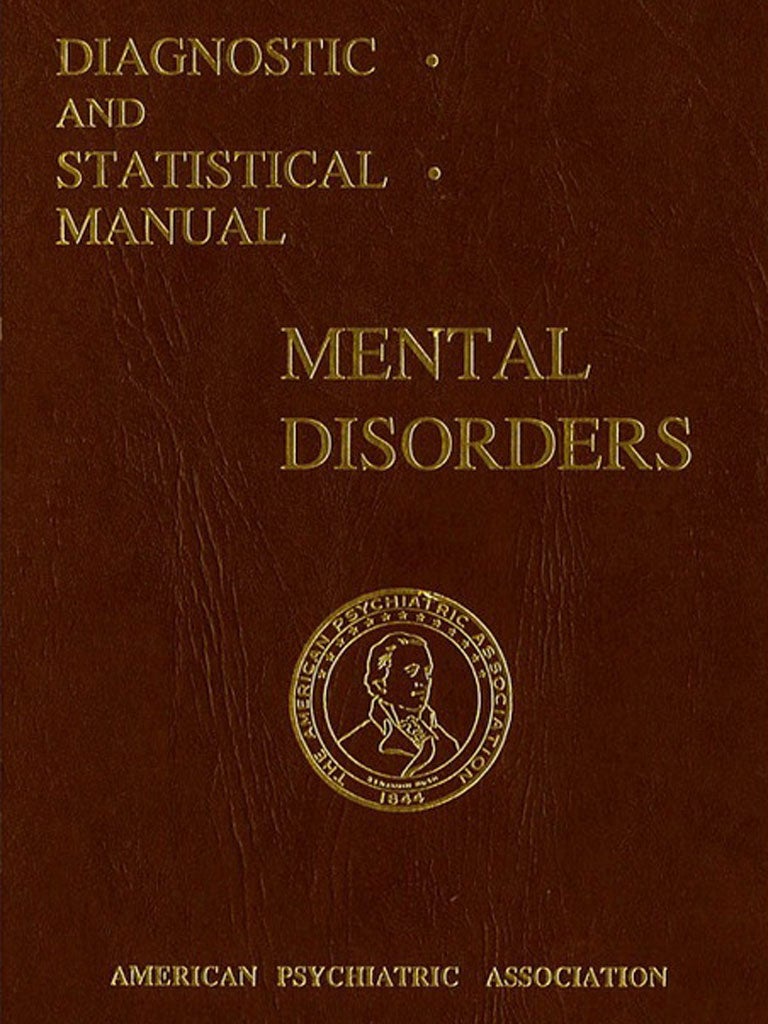Doctors in dispute: What exactly is normal human behaviour?
The fifth edition of the psychiatrists’ bible, DSM V, reignites the row over the massive growth in mental disorders

It is over 1,000 pages long, has undergone more than three years of revisions and has set doctors at each other's throats. But the latest version of the psychiatrists' bible is finally out - to a chorus of criticism that it is pathologising everyday life.
The fifth Diagnostic and Statistical Manual of Mental Disorders or "DSM 5" was published by the American Psychiatric Association this week. It is 60 years since the first edition appeared in 1952 , which listed 106 disorders, and the joke is that every time it has been revised it has doubled in size. By the time DSM 4 appeared in 1994 there were 365.
Critics claim the latest edition, which dwarfs its predecessors, will increase again the numbers diagnosed with mental disorders who will be dosed with powerful mind-altering drugs, as well as subtly shifting perceptions of what it is to be normal.
They accuse the authors - a 31 strong taskforce - of medicalising human nature through disease mongering by psychiatrists and pharmaceutical companies, eager to create new markets for their treatments.
Among new diagnostic labels to be included are "binge eating disorder", "gambling disorder, and "disruptive mood dysregulation disorder" (child temper tantrums). "Hypersexual disorder", also known as Clinton syndrome, which appeared in an early draft of the manual has been dropped, as have "relational disorder" and "sluggish cognitive tempo."
Dr Allen Frances, who chaired the task force that produced DSM 4 almost 20 years ago , has become one of the most vocal critics of DSM 5, and has written a book about his objections "Saving Normal: an insider's revolt against out-of-control psychiatric diagnoses".
He cites the changed definition of grief as a depressive disorder - if it persists for more than two weeks in the new edition, compared with two months in the old edition.
"This is the legalised conversion of a sacred ritual and an inherent part of being a mammal - mourning - into a mental disorder," he said.
Disputes, sometimes ferocious, have marked the manual throughout its history. The first edition was based on work by Brigadier General William C. Menninger to aid the assessment and treatment of soldiers in the Second World War.
Homosexuality was included as a mental disorder until the early 1970s when protests by gay rights activists and evidence from Alfred Kinsey, whose Kinsey reports transformed understanding of human sexual behaviour, led to its being withdrawn in the second edition published in 1974.
Although the manual is used principally in the US, its influence is felt in Europe - where the equivalent tome, the International Classification of Diseases is being updated by the World Health Organisation - through professional links and by affecting pharmaceutical company decisions over research and marketing.
In the UK its publication has re-awakened a 40 year old dispute between psychiatrists and psychologists over the true nature of mental illness.
Unlike other areas of medicine there are no definitive tests for psychiatric diagnoses which are based on descriptions of symptoms and have been likened to a field guide to birds, listing identifying marks.
A statement by the Division of Clinical Psychology of the British Psychological Society said psychiatric diagnoses were of "limited reliability" and called for their abandonment and replacement by social and psychological explanations.
But David Clark, professor of experimental psychology at the University of Oxford, said a classification system of the sort provided by DSM 5 was essential to deliver the right treatment to the right patients.
He cited the example of anxiety, of which only two types were recognised 20 years ago. Today there are many categories including post traumatic stress disorder, panic disorder, social anxiety disorder and generalised anxiety disorder.
"There is no generic treatment for anxiety. We do need to look at the type of anxiety disorder in order to give the best treatment. Some conditions are outrageously under-recognised in primary care," he said.
Nick Craddock, professor of psychiatry at Cardiff University, said denied that psychiatry had expansionist ambitions. "UK psychiatrists are not out there looking to expand the number of patients they can see. The real importance of DSM 5 is in small changes to the criteria for diagnosing core illnesses like schizophrenia."
"At the severe end we are dealing with people whose lives have been decimated by mental illness. They have a right to benefit from the best treatments."
THE MEN BEHIND THE MANUAL
Brigadier General William C Menninger, main image, was the originator of DSM I – his work in the 1940s on developing a new classification scheme for mental disorders led to the manual’s eventual publication in 1952.
After lobbying by gay rights activists in the early 1970s, and evidence presented by Alfred Kinsey, homosexuality was removed in 1974 as a category of disorder from DSM IV.
David Kupfer, head of psychiatry at the University of Pittsburgh, is chair of the task force that has produced DSM V.
Two of DSM V’s fiercest critics, Dr Allen Frances and Dr Robert Spitzer, chaired the task forces that produced previous editions.
In the UK, Oliver James, the writer, and Lucy Johnstone, a clinical psychologist, have criticised the “medicalisation of everyday life”.
Subscribe to Independent Premium to bookmark this article
Want to bookmark your favourite articles and stories to read or reference later? Start your Independent Premium subscription today.

Join our commenting forum
Join thought-provoking conversations, follow other Independent readers and see their replies